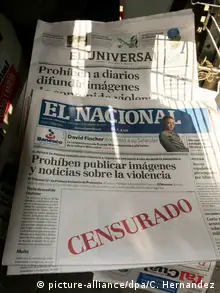Insights
Successfully implementing media law: some recommendations
Creating a supportive legal environment for the media sector needs more than traditional legal reform. It requires taking into account the local context and the diverse stakeholders and their attitudes to the media.
Understanding the overlaps and differences between the 'law on paper' and the 'law in practice requires not only focusing on normative standards. Beyond the features of the legal architecture itself, it is necessary to look at the meanings attributed to such features by citizens and officials and the actions that follow. Their attitudes are also influenced by the fuller social context, including the cultural, economic, political and technological contexts, in which the implementation of the law occurs.
This is why different states, at different stages of development, require different strategies for creating an enabling legal environment for the media sector.
Transferring legal models – that means taking what is known and considered good by one group and transferring it to another – might create problems in implementation. For example, Western media law models have been based on specific constellations of highly developed technology, competitive markets and established democratic systems.
These models cannot be transferred abroad and implemented without consideration of the local economic, political and societal conditions, the general legal circumstances and the level of journalistic professionalism. Neglecting this contextualization can be an important reason for failure.
Before adopting formal media law, it is important to analyze and take into account local stakeholders and special interest groups, the economic and technological opportunities, the journalism culture, the commitment of civil society and citizens' media literacy.
Some general parameters of a legal enabling environment for the development of the media sector have already been identified. These include, for example, respect for the rule of law, media-specific laws and regulation with indirect effect of the content. Beyond these formal laws are institutional structures supporting free and independent media operations, such as the issue of security, the economic and technological environment and civil society support. (See, for example, CIMA's Media Law Assistance report and The Enabling Environment for Free and Independent Media by USAID.)
What else is important?
- Controlling the implementation of the law. Media development actors should not only be concerned with the making of the law but also with the implementation of the law. Controlling the implementation of the law requires continuous monitoring of all relevant authorities, bodies and courts, and likewise offers the opportunity for on-going discussion on progress. Hence, legal reform should not be seen as a one-off; rather, it is an on-going and iterative learning process.
- Perception and motivations of decision-makers. The degree to which the independence of media authorities and public service broadcasters is protected is particularly susceptible to the political and cultural circumstances. Indices on media independence are based primarily on the formal, legal guarantees. There are additional indicators of informal factors of independence that attempt to define the circumstances under which the regulatory authority is able to function while disregarding outside pressures. However, these indicators can be misleading in situations where decision makers perceive themselves to be part of the political system and may voluntarily serve political interests.
- Effective policy guidelines regarding lawful journalistic behavior. Recipients of legal norms are – first and foremost – the journalists and editorial staff. From their point of view, the clarity of the norms is most significant. Vague laws can make limitations on media freedom unpredictable and thus are powerful incentives for self-censorship. Similarly, the threat of strong sanctions and the limited capacity of authorities to investigate, often compounded by discriminative and non-transparent practices, increases the risk of self-censorship. Uncertainty regarding lawful journalistic behavior can be reduced with effective policy guidelines.
- Understanding "soft censorship". By restructuring the media market or manipulating the distribution of resources in the media market, media regulatory interventions can increase or decrease the likelihood of certain points of view reaching audiences; conversely this can also reduce the chances of other viewpoints achieving the same. These interventions fall into the category of "soft censorship" or indirect censorship. They increase the political and economic vulnerability of individual players in the media system and the likelihood of editorial compromises in the interest of securing available resources.
Some helpful analytical tools for regulatory interventions and soft censorship
The great diversity of stakeholders, processes and interests potentially affected by media regulation justifies the use of frameworks and analytical tools developed in different disciplines. This multidisciplinary approach is suitable for identifying factors that lead to self-censorship and soft censorship:
- Surveys and in-depth-interviews with journalists and other key stakeholders, such as media owners, media authority officials, and judges. Both quantitative and qualitative analyses of media contents and reach may, likewise, provide important insights into the impact of media policy.
- Statistical analysis of data and processes may help uncover some of the latent intentions underlying media policies, especially when these processes are shaped by numerous political and economic factors that might at first appear independent of media policy decisions.
- Empirical analysis of media content is an important instrument for investigating the implementation of media policy whose interventions are aimed at influencing media content and at selecting the media that reach audiences.
- Public opinion surveys that measure public opinion of press freedom and the way the media system works contribute to efforts to describe the overall capacity of the media to fulfill their function.
- Analysis of legal statutes may provide important information regarding the motivations and efficacy of media policy interventions. Public policies and strategic documents likewise offer the possibility of such type of analyses.
This article is part of the #mediadev series "Building coalitions for media reform" where experts from the field of media, academia and development discuss the impact and interaction of media with other governance issues - and how media can fit into the broader development agenda.
DW recommends
WWW links
- Date 14.09.2016
- Author Gabor Polyák and Sacha Meuter
- Feedback: Send us an e-mail. Please include your name and country in your reply.
- Print Print this page
- Permalink https://p.dw.com/p/1K236
- Date 14.09.2016
- Author Gabor Polyák and Sacha Meuter
- Send us your feedback.
- Print Print this page
- Permalink https://p.dw.com/p/1K236


